ISSN
2307–3489 (Print), ІSSN
2307–6666
(Online)
Наука
та прогрес транспорту. Вісник
Дніпропетровського
національного університету залізничного
транспорту, 2016, № 6 (66)
транспортне
будівництво
транспортне
будівництво
UDC
692.47:624.012.45-034.14
G. M. GASII1*
1*Dep.
«Structures from Metal, Wood and Plastics», Poltava National
Technical Yuri Kondratyuk University,
Pershotravnevyi Av., 24,
Poltava, Ukraine, 36011, e-mail grigoriigm@gmail.com, ORCID
0000-0002-1492-0460
Types of steel and concrete
composite cable space
frames
Purpose. Modern terms of the construction
generate the need to find new structures, including roof systems that
would meet modern requirements. An important aspect in finding
constructive solutions for new structures is the use of reliable and
advanced materials. Considering this, the decision to develop the new
space structures to a wide implementation in practice of domestic and
foreign construction are relevant and perspective direction of
building structures development. Methodology. Given the
results of previously conducted theoretical research of existing
types of space roof structures find promising areas of improvement or
creation of new structures that should be devoid of weaknesses and
imperfections of analogs and they should have an economic effect
through rational use of materials. Findings. Types of steel
and concrete composite cable space frames and structural features of
its elements are developed and considered. The steel and concrete
composite cable space frame is a completely new kind of space
structure system that has the original structural concept and it was
designed to cover large-span industrial and public buildings. The
basic elements of that structure system are modular element of the
bottom chord and space steel and concrete composite module that
consists of tubular rods and reinforced concrete slab. All modular
elements are made in the factory. With bottom chord modular elements
and space steel and concrete composite modules can be assembled three
types of longitudinal elements. It is the beam element, arched
element and hanging element. Also with the modules can be assembled
various structure system and their combinations. Number of space
steel and concrete composite modules and bottom chord modular
elements, which is needed to collect steel and concrete composite
cable space frames, is determined by calculation and optimal
designing. Recommended dimensions of the modular elements of the
steel and concrete composite cable space frames are presented.
Originality. The new efficient construction roofs that
appointment for covering large-span buildings were developed by the
author. Practical value. Developed steel and concrete
composite grid-gable roofs are designed for industrial and civil
construction. Applications of developed designs for the construction
of large-span covering objects provides a significant economic
benefit through the efficient use of materials.
Keywords: plate; tube; bar; bolt; module; top
chord; bottom chord
Introduction
There is a problem often in
building sector, which lies in the complexity of work and material
overruns due to no effective use. This situation in the construction
has developed due non-compliance existing industry design solutions
to modern requirements that over time morally and physically
obsolete. These factors directly affect the overall cost and
duration of the construction project, so there is a requirement to
improve and finding the new structures systems, including space
structures that would permit largely achieve savings of materials
and reduce complexity of technological processes.
This was the cause of the idea
of developing the new concept of the space steel and concrete
composite systems that not only will combine in themselves the
results of previous studies [5, 6, 10] and will have positive
properties of existing spatial structures, but will have own unique
properties are specific to them.
Analysis of recent sources of
research and publications has shown that steel and concrete
composite is a material that were used very widely in various fields
of construction [3, 8, 9, 11, 14, 15]. Currently the main directions
of research the steel and concrete space structures are related with
the improvement of methods of calculation and constructive solutions
as well as study influence of different types of load on the
stress-strained state and so on [4, 7, 12, 13].
The analysis of previous
studies has shown that most of the steel and concrete space
structures are monolithic. However, prefabricated structures, which
would allow building curved surface, have not developed yet.
Purpose
To develop
and present main types of steel and concrete composite cable space
frames that will allow building large-span
roof system applied to transport infrastructure.
Methodology
and Findings
There is an opportunity to
build cover buildings various sizes and shapes, including various
membrane curvature, domes, and others due to that steel and concrete
composite cable space frames is modular. Considering the novelty of
the structure concept of the steel and concrete composite cable
space frames a priority task is to define the field of application
these structures and to develop several types of forms and
structural elements. Concurrently all samples that were developed
were patented. The basic elements of that structure system are
modular elements of the bottom chord (Fig. 1) and the steel and
concrete composite space modules that consists of tubular diagonal
and reinforced concrete slab (Fig. 2) [2].
In general, the basis of the
steel and concrete composite space module is reinforced concrete or
steel-concrete square slab. It plays the role of the top chord of
the steel and concrete composite cable space frames. In general,
dimensions of the reinforced concrete slab can be different and are
calculated, but the recommended dimensions of the slab in the plan
are 1.5×1.5 m or 3×3 m. The diagonals are made of circular cross
section, preferably with a tube, which plays the role of the lattice
of the structure. The angle between tubular diagonal and their
horizontal projections α can be for as conventional space grid
structures, but recommended 45°. The steel and concrete composite
space modules are combined to each other by means of the nodal
connections in a plane of the top chord (Node 2, see. Fig. 3) in the
plane of the bottom chord (Node 1 see. Fig. 4), construction of
which can be different design depending on the type of steel and
concrete composite cable space frames [1].
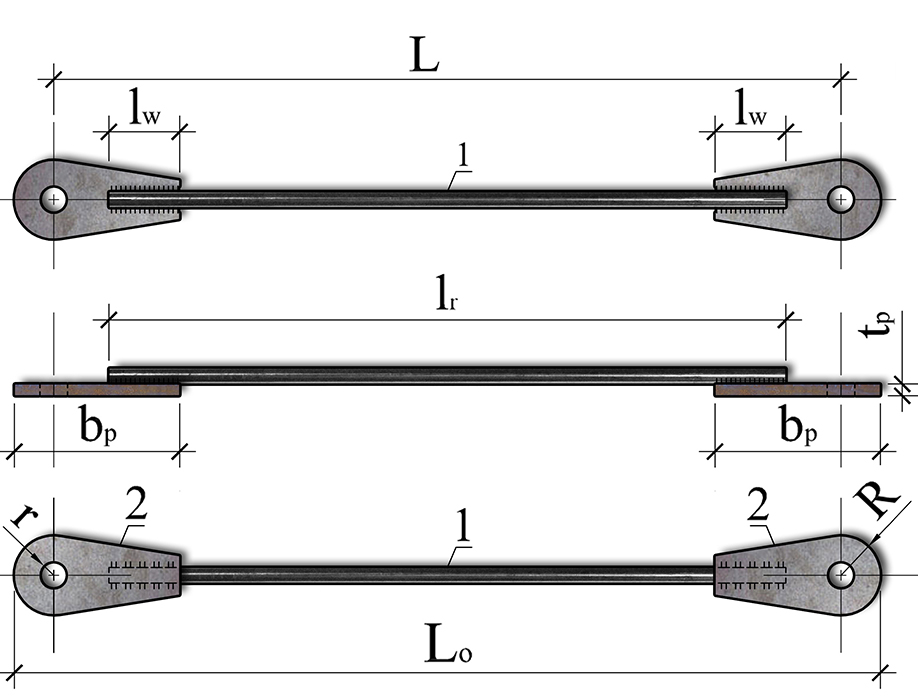
Fig. 1. Modular elements of the bottom chord of steel
and concrete composite cable space frames:
1
– steel rode; 2
– steel plate with hole
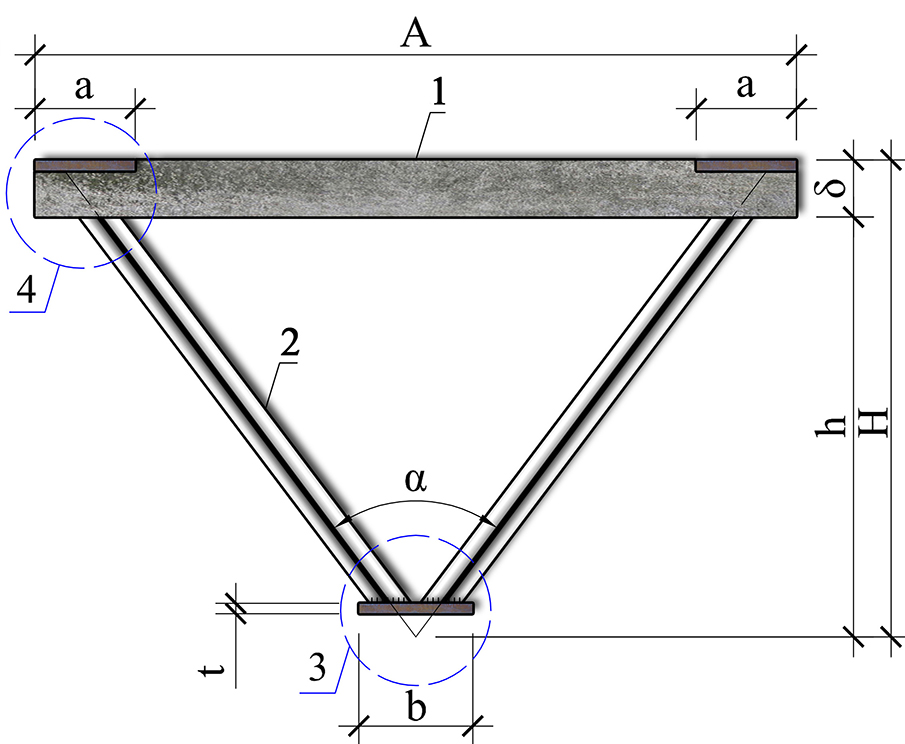
Fig. 2. Steel and concrete composite space module:
1
– reinforced concrete slab;
2
– tubular diagonal
3
– node on top chord (node 1);
4
– node on bottom chord (node 2)
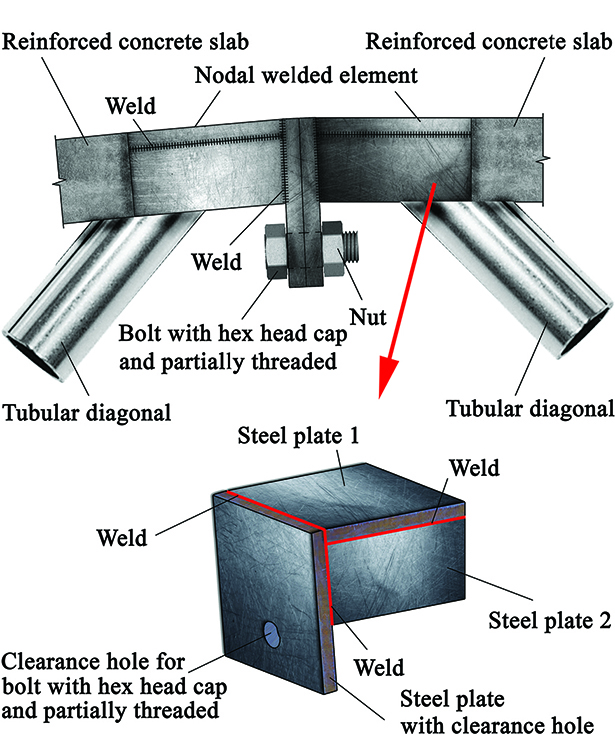
Fig. 3. Example of the nodal connections
on
a plane of the top chord (Node 2)
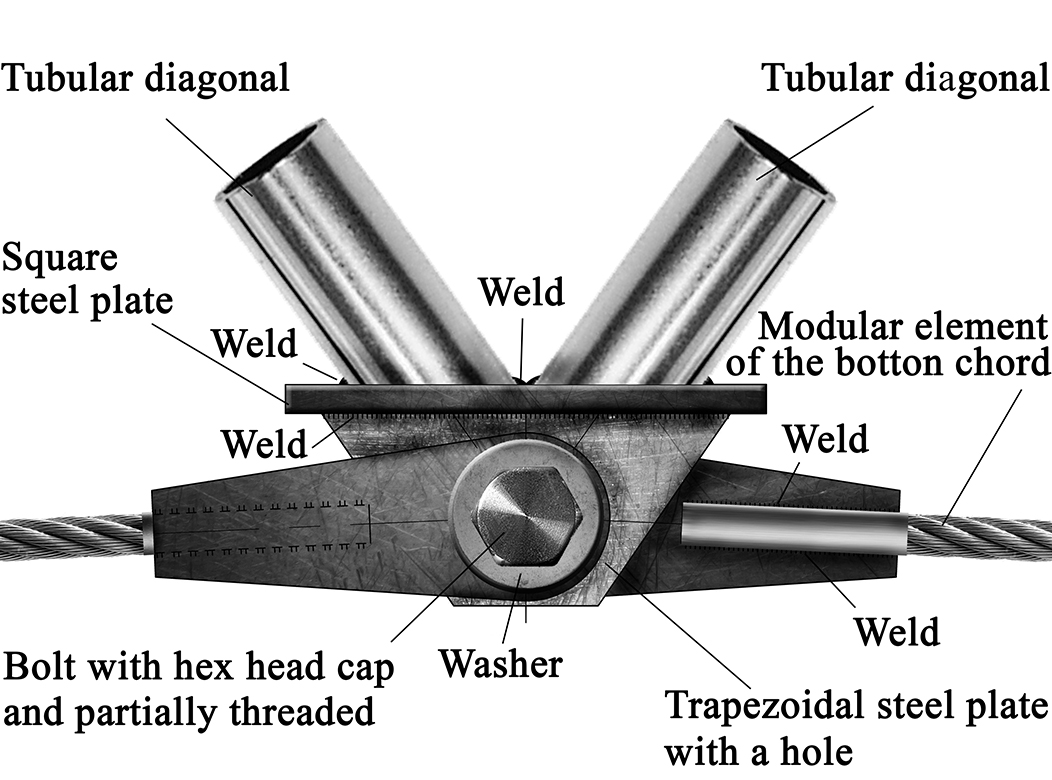
Fig. 4. Example of the nodal connections on a plane
of
the bottom chord (Node 1)
The node on
plane of the top chord includes the nodal welded element, which
consist of three steel parts: rectangular steel plate 1, rectangle
trapezoid steel plate 2 and rectangular steel plate with clearance
hole. These steel plates are connected with electric arc
welding. Two nodal welded elements that are part of steel and
concrete composite space modules are connected with partially
threaded bolt with hex head cap through the clearance hole.
The node on plane of the bottom
chord includes the nodal welded element, which consists of two steel
parts: square steel plate and trapezoid steel plate with clearance
hole. These steel plates are connected with electric arc welding.
To reduce the weight of the
steel and concrete composite space module was offered improved
design solution, the essence of which was to use the plate as the
top chord, which is made from lightweight concrete or ferrocement,
as well as tubular rods were used, which are made from high-strength
steel. As a result, the lightweight element of structure was
patented. Lightweight element of structure is part of the steel and
concrete composite cable space frames and can be used in the
construction of large-span public and industrial buildings. The
effectiveness of lightweight elements consists in low weight, ease
of installation, low complexity manufacturing, short period of the
construction. It should be noted that lightweight elements are made
entirely in the factory.
With bottom chord modular
elements (see Fig. 1) and space steel and concrete composite
modules (see Fig. 2) can be assembled three types of longitudinal
elements. It is the beam element, arched element and hanging element
(Fig. 5).
Longitudinal elements can be
used equally effectively as cover for large and small spans (Fig. 5)
and be an alternative to precast concrete system, which consist of
hollow or ribbed panels that are mounted on truss or beams, also
composite steel deck concrete roof system.
Longitudinal
elements, which do not exceed the length of the dimensions of
transportation are completely manufactured and assembled in the
factory. In this case, longitudinal elements are delivered to the
building site as a complete construction. This will greatly reduce
the complexity of assembly and installation and reduce the total
duration of the construction steel and concrete composite cable
space frames. The effectiveness of complete factory manufacturing of
the modular or longitudinal elements is especially evident in the
case when elements have constructive improvements that are designed
to simplify and reduced the length of works. For example, Fig. 6
shows the steel and concrete composite space module with a
steel frame, the effectiveness of this solution lies in the frame
that serves as not only a means to strengthen the slab, but also to
connect the modules to each other in the case of welding. In
addition, steel frame also serves as a permanent form during
concreting of module. Fig. 7 shows another example. It is the steel
and concrete composite space module, which besides steel frame has
additional elements – steel shelves, which serve as an aid in the
installation the construction.
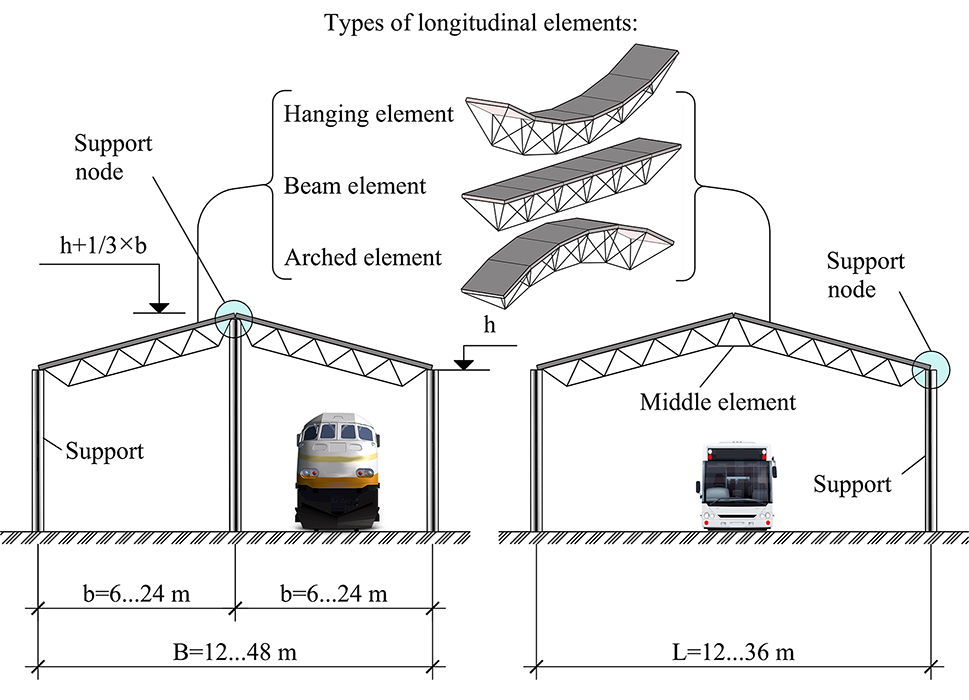
Fig. 5. Variants of roof system are made from
longitudinal elements
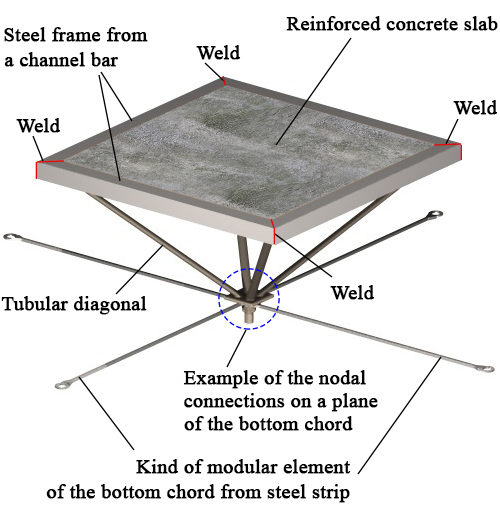
Fig. 6. Improved designs of the steel and concrete
composite space module with a steel
frame
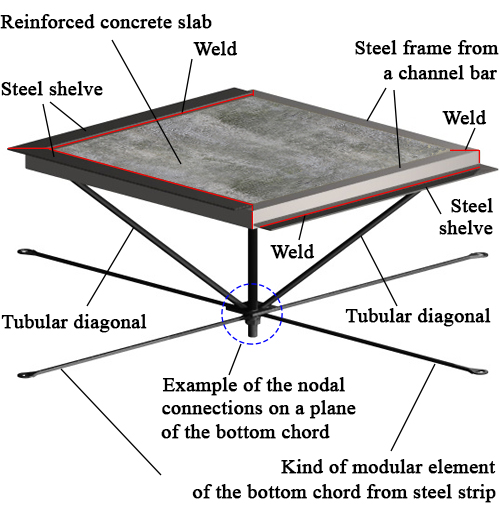
Fig. 7. Improved designs of the steel and concrete
composite space module with steel
shelves
Curvature of longitudinal
elements or steel and concrete composite cable space frames is
provided by reducing or increasing the length of the modular element
of the bottom chord L (see Fig. 1), in consequence of which between
steel and concrete composite space modules is formed mutual angle.
However, it should be noted that the curvature of the arch of steel
and concrete composite cable space frames is limited and depends on
conditions of fixing. While designing of steel and concrete
composite cable space frames need to remember that the modular
element of the bottom chord are designed to work only in tension.
Thus designing these systems should take the following geometric
dimensions of its constituent elements and geometric parameters that
will prevent the emergence of effort compression elements in the
modular element of the bottom chord. Determining some optimum
geometrical parameters of these structures were presented in [2]. In
general, for steel and concrete composite cable space frames with
recommended dimensions of the steel and concrete composite space
module and angle between diagonal and its horizontal projection, the
relationship between the length of the modular element of the bottom
chord and angle has barely noticeable curvilinear nature.
Originality
and practical value
The steel and concrete
composite cable space frames are the new kind of effective space
grid structures that allow saving of material resources and reducing
construction laboriousness because the bottom chord of the frames
are made of flexible rods. These rods in its essence and idea are
not designed for compression, so for the manufacture of such rods
there is no need to apply rigid and massive types of metal rolling
to provide a load carrying capacity and rigidity of the frames. This
specifics of the designed frames are closely associated with the
utilize of high-strength steels for manufacturing elements of the
bottom chord, because as we know in tension elements effectively
apply high-strength steels. This fact was found after comparison
between developed frames and typical design solutions of long-span
roof system had been conducted. It has been found that the steel and
concrete composite cable space frames can be lighter than typical
roof systems about at 32–72%.
Conclusions
The steel and concrete
composite cable space frames are the new kind of large-span
structures, which have significant advantages, in particular, they
are lighter and have lower complexity of manufacturing and assembly
than analogues. The basic elements of that structure system are
modular elements of the bottom chord and space steel and concrete
composite modules. Modular elements of the bottom chord, steel and
concrete composite space modules and three types of longitudinal
elements are used for construction large-span industrial and public
buildings. Thanks to its modular design the steel and concrete
composite cable space frames can be varied expressive architectural
outline and shape. Flat double-layer grid is the simplest type of
the steel and concrete composite cable space frames. This type of
structures is used efficiently for small spans like that structure
that installed on individual supports or on a contour.
In general, from modular
elements can be erected not only the proposed system but also many
others, including steel and concrete composite cable space frames,
which have complex shapes or combinations for covering hangars for
aircraft, machinery or equipment, etc.
LIST OF reference LINKS
Гасій, Г. М. Аналіз
напружено-деформованого стану
трапецієподібної сталевої пластини
вузла з’єднання елементів нижнього
пояса експериментальної структурно-вантової
сталезалізобетонної циліндричної
оболонки / Г. М. Гасій // Зб. наук. пр.
УкрДУЗТ. – Харків, 2016. – Вип. 162. –
С. 41–47.
Стороженко, Л. І. Особливості
конструктивного рішення та проектування
повнорозмірного експериментального
зразка структурно-вантового
сталезалізобетонного покриття /Л.
І. Стороженко, Г. М. Гасій // Зб. наук. пр.
Серія : Галузеве машинобудування,
буд-во / Полтав. нац. техн. ун-т ім. Ю.
Кондратюка. – Полтава, 2016. – Вип. 1 (46).
– С. 51–59.
Шмуклер, В. С. Экспериментальные
исследования пролетного строения
пешеходного моста нового типа / В. С.
Шмуклер, Е. С. Краснова, С. Н. Краснов //
Вестн. Харьк. нац. автомоб.-дорож. ун-та.
– Харьков, 2012. – Вып. 58. – С. 70–77.
Altoubat, S. Effect of fibers and
welded-wire reinforcements on the diaphragm behavior of composite
deck slabs / S. Altoubat, H. Ousmane, S. Barakat // Steel and
Composite Structures. – 2015. – Vol. 19. – Iss. 1. – P.
153–171. doi.10.12989/scs.2015.19.1.153.
Bai, Y. Novel Joint for Assembly of
All-Composite Space Truss Structures: Conceptual Design and
Preliminary Study / Y. Bai, X. Yang // J. of Composites for
Construction. – 2013. – Vol. 17. – Iss. 1. – P.
130–138. doi: 10.1061/(asce)cc.1943-5614.0000304.
Dan, D. Theoretical and
experimental study on composite steel–concrete shear walls with
vertical steel encased profiles / D. Dan, A. Fabian, V. Stoian
// J. of Constructional Steel Research. – 2011. – Vol. 67. –
Iss. 5. – P. 800–813. doi:
10.1016/j.jcsr.2010.12.013.
Gasii, G. M. Technological and
design features of flat-rod elements with usage of composite
reinforced concrete / G. M. Gasii // Metallurgical and Mining
Industry. – 2014. – № 4. – P. 23–25.
Ivanyk, I. Research of composite
combined prestressed constructions / I. Ivanyk, Y. Vybranets, Y.
Ivanyk // Acta Scientiarum Polonorum.
Architectura. – 2014. – Т. 13, № 2. – С. 81–88.
Johnson, R. P. Composite Structures
of Steel and Concrete: Beams, Slabs, Columns, and Frames for
Buildings / R. P. Johnson. – 3d
еd. – Oxford : Blackwell, 2004.
– 252 p.
Nathan, W. A. Composite Structural
Steel and Prestressed Concrete Beam for Building Floor Systems / W.
А. Nathan. – Lincoln : University of
Nebraska, 2012. – 112 p.
Oehlers, D. J. Composite Steel and
Concrete Structures: Fundamental Behavior / D. J. Oehlers, M. A.
Bradford. – Oxford : Elsevier, 2013. –
588
p.
Tang, R. Q. The static study on
steel truss concrete slab composite structure / R. Q. Tang, Y.
Huang // J. of Guizhou University (Natural Sciences). – 2013. –
Vol. 5. – Р. 23.
Uy, B. Applications, behaviour and
design of composite steel-concrete structures / B. Uy // Advances
in Structural Engineering. – 2012. – Vol. 15. – Iss. 9. –
P. 1559–1572. doi:
10.1260/1369-4332.15.9.1559.
Vayas, I. Design of steel-concrete
composite bridges to Eurocodes / I. Vayas, A. Iliopoulos. – Boca
Raton ; London ; New York : CRC Press, 2013. – 584 p. doi:
10.1201/b15690.
Yang, X. Structural performance of
a large-scale space frame assembled using pultruded GFRP composites
/ X. Yang, Y. Bai, F. Ding // Composite Structures. – 2015. –
Vol. 133. – P. 986–996. doi: 10.1016/j.compstruct.2015.07.120.
Г. М. ГАСІЙ1*
1*Каф.
«Конструкції з металу, дерева та
пластмас», Полтавський національний
технічний університет
імені Юрія
Кондратюка, пр-т Першотравневий, 24,
Полтава, Україна, 36011, e-mail grigoriigm@gmail.com,
ORCID 0000-0002-1492-0460
Типи просторових структурно-
вантових
сталезалізобетонних
конструкцій
Мета. Умови існуючого
будівництва породжують необхідність
пошуку нових конструкцій, зокрема
покриттів, які б задовольняли
сучасним вимогам. Важливим моментом у
пошуку конструктивних рішень нових
конструкцій є використання надійних
і сучасних матеріалів. Враховуючи це,
рішення розробити нові просторові
конструкції з метою широкого впровадження
в практику вітчизняного й зарубіжного
будівництва є актуальним і перспективним
напрямком розвитку будівельних
конструкцій. Методика.
З урахуванням результату попередньо
проведеного теоретичного дослідження
існуючих типів просторових конструкцій
покриттів знайдено перспективні
напрямки їх удосконалення або створення
нових конструкцій, які були б не лише
позбавлені недоліків та недосконалостей
аналогів, але й мали економічний ефект
за рахунок раціонального використання
матеріалів. Результати.
Розроблено та розглянуто типи просторових
структурно-вантових сталезалізобетонних
конструкцій та конструктивні особливості
їх елементів. Просторові структурно-вантові
сталезалізобетонні конструкції –
абсолютно новий вид просторових несучих
систем із оригінальним конструктивним
рішенням, що призначені для покриття
великопролітних промислових та
громадських будівель і споруд. Основними
елементами таких конструкцій є модульні
елементи нижнього пояса та просторові
сталезалізобетонні модулі, які
складаються із плит та трубчастих
стрижнів. Всі модульні елементи
виготовляються в заводських умовах. З
просторових сталезалізобетонних
модулів і модульних елементів нижнього
пояса можуть збиратися три типи лінійних
елементів: балковий, арковий і висячий,
а також різні несучі системи та їх
комбінації. Кількість просторових
сталезалізобетонних модулів та модульних
елементів нижнього пояса, що необхідні
для збирання просторових конструкцій,
визначається розрахунком та варіантним
проектуванням. Наведено рекомендовані
розміри модульних елементів
структурно-вантової сталезалізобетонної
конструкції. Наукова
новизна. Автором
розроблені нові ефективні конструкції
покриттів, які призначені для перекриття
великопролітних будівель та споруд.
Практична значимість.
Розроблені сталезалізобетонні
структурно-вантові покриття призначені
для промислового та цивільного
будівництва. Застосування розроблених
конструкцій для зведення покриття
великопролітних будівель та споруд
дозволяє отримати значний економічний
ефект за рахунок раціонально використаних
матеріалів.
Ключові слова:
пластина; труба; стрижень; болт; модуль;
верхній пояс; нижній пояс
Г. М. ГАСИЙ1*
1*Каф.
«Конструкции из металла, дерева и
пластмасс», Полтавский национальный
технический университет
имени
Юрия Кондратюка, пр-т Первомайский, 24,
Полтава, Украина, 36011, e-mail grigoriigm@gmail.com,
ORCID 0000-0002-1492-0460.
Типы пространственных
структурно-
вантовых сталежелезобетонных
конструкций
Цель. Условия существующего
строительства порождают необходимость
поиска новых конструкций, в
частности покрытий, которые бы
удовлетворяли современным требованиям.
Важным моментом в поиске конструктивных
решений новых конструкций является
использование надежных и современных
материалов. Учитывая это, решение
разработать новые пространственные
конструкции с целью широкого внедрения
в практику отечественного и зарубежного
строительства является актуальным и
перспективным направлением развития
строительных конструкций. Методика.
С учетом результата предварительно
проведенного теоретического исследования
существующих типов пространственных
конструкций покрытий найдены перспективные
направления их усовершенствования или
создания новых конструкций, которые
были бы не только лишены недостатков
и несовершенств аналогов, но и имели
бы экономический эффект за счет
рационального использования материалов.
Результаты.
Разработаны и рассмотрены типы
пространственных структурно-вантовых
сталежелезобетонных конструкций и
конструктивные особенности их элементов.
Пространственные структурно-вантовые
сталежелезобетонные конструкции –
абсолютно новый вид пространственных
несущих систем с оригинальным
конструктивным решением, предназначены
для покрытия большепролетных промышленных
и общественных зданий и сооружений.
Основными элементами таких конструкций
являются модульные элементы нижнего
пояса и пространственные сталежелезобетонные
модули, состоящие из плит и трубчатых
стержней. Все модульные элементы
изготавливаются в заводских условиях.
С пространственных сталежелезобетонных
модулей и модульных элементов нижнего
пояса могут собираться три типа линейных
элементов: балочный, арочный и висячий,
а также различные несущие системы и их
комбинации. Количество пространственных
сталежелезобетонных модулей и модульных
элементов нижнего пояса, необходимое
для сбора пространственных конструкций,
определяется расчетом и вариантным
проектированием. Приведены рекомендуемые
размеры модульных элементов
структурно-вантовой сталежелезобетонной
конструкции. Научная
новизна. Автором
разработаны новые эффективные конструкции
покрытий, которые предназначены для
перекрытия большепролетных зданий и
сооружений. Практическая
значимость. Разработанные
сталежелезобетонные структурно-вантовые
покрытия предназначены для промышленного
и гражданского строительства. Применение
разработанных конструкций для возведения
покрытий большепролетных зданий и
сооружений позволяет получить
значительный экономический эффект за
счет рационально использованных
материалов.
Ключевые слова: пластина;
труба; стержень; болт; модуль; верхний
пояс; нижний пояс
REFERENCES
Gasii G.M. Analiz napruzheno-deformovanoho stanu
trapetsiiepodibnoi stalevoi plastyny vuzla ziednannia elementiv
nyzhnoho poiasa eksperymentalnoi strukturno-vantovoi
stalezalizobetonnoi tsylindrychnoi obolonky [Analysis of
stress-strain state of the trapezoidal steel plate used for joint
of elements of the bottom chord of the experimental composite steel
and concrete grid-cable barrel shell]. Zbirnyk naukovykh prats
Ukrainskoho derzhavnoho universytetu zaliznychnoho transportu
[Proc. of Ukrainian State University of Railway Transport], 2016,
issue 162, pp. 41-47.
Storozhenko
L.I., Gasii G.M. Osoblyvosti konstruktyvnoho rishennia ta
proektuvannia povnorozmirnoho eksperymentalnoho zrazka
strukturno-vantovoho stalezalizobetonnoho pokryttia [The features
of structural concept and designing of the full-length experimental
module of the composite steel and concrete grid-cable roof].
Zbirnyk naukovykh prats Poltavskoho natsionalnoho
tekhnichnoho universytetu imeni Yu. Kondratiuka. Seriia
«Haluzeve mashynobuduvannia, budivnytstvo»
[Proc. of Poltava National Technical Yuri Kondratyuk University.
Series «Industrial Engineering, Construction»], 2016,
issue 1 (46), pp. 51-59.
Shmukler
V.S., Krasnova Ye.S., Krasnov S.N. Eksperimentalnyye issledovaniya
proletnogo stroyeniya peshekhodnogo mosta novogo tipa [Experimental
studies of pedestrian bridge span structures of new type]. Vestnik
Kharkovskogo natsionalnogo avtomobilno-dorozhnogo universiteta
[Bulletin of Kharkov National Automobile and Highway University],
2012, issue 58, pp. 70-77.
Altoubat
S., Ousmane H., Barakat S. Effect of fibers and welded-wire
reinforcements on the diaphragm behavior of composite deck slabs.
Steel and Composite Structures, 2015, vol. 19, no. 1, pp.
153-171. doi: 10.12989/scs.2015.19.1.153.
Bai
Y., Yang X. Novel Joint for Assembly of all-composite space truss
structures: conceptual design and preliminary study. Journal of
Composites for Construction, 2012, vol. 17, no. 1, pp. 130-138.
doi: 10.1061/(ASCE)CC.1943-5614.0000304.
Dan
D., Fabian A., Stoian V. Theoretical and experimental study on
composite steel-concrete shear walls with vertical steel encased
profiles. Journal of Constructional Steel Research, 2011,
vol. 67, no. 5, pp. 800-813. doi: 10.1016/j.jcsr.2010.12.013.
Gasii
G.M. Technological and design features of flat-rod elements with
usage of composite reinforced concrete. Metallurgical and
Mining Industry, 2014, no. 4, pp. 23-25.
Ivanyk
I., Vybranets Y., Ivanyk Y. Research of composite combined
prestressed constructions. Acta Scientiarum Polonorum.
Architectura, 2014, vol. 13, no. 2, pp. 81-88.
Johnson
R.P. Composite Structures of Steel and Concrete: Beams, Slabs,
Columns, and Frames for Buildings. 3d еd. Oxford,
Blackwell, 2004. 252 p.
Nathan
W. A Composite Structural Steel and Prestressed Concrete Beam for
Building Floor Systems. Lincoln, University of Nebraska Publ.,
2012. 112 p.
Oehlers
D.J., Bradford M.A. Composite Steel and Concrete Structures:
Fundamental Behavior. Oxford, Elsevier Publ., 2013. 588 p.
Tang
R.Q., Huang Y. The static study on steel truss concrete slab
composite structure. Journal of Guizhou University (Natural
Sciences), 2013, no. 5, 23 p.
Uy
B. Applications, behaviour and design of composite steel-concrete
structures. Advances in Structural Engineering, 2012, vol.
15, no. 9, pp. 1559-1572. doi: 10.1260/1369-4332.15.9.1559.
Vayas
I., Iliopoulos A. Design of steel-concrete composite bridges to
Eurocodes. Boca Raton, London, New York, CRC Press Publ., 2013. 584
p.
Yang
X., Bai Y., Ding F. Structural performance of a large-scale space
frame assembled using pultruded GFRP composites. Composite
Structures, 2015, no. 133, pp. 986-996. doi:
10.1016/j.compstruct.2015.07.120.
Prof. L. I. Storozhenko, D.
Sc. (Tech.) (Ukraine); Prof. D. O. Bannikov, D. Sc. (Tech.)
(Ukraine) recommended this article to be published
Accessed: Sep. 07, 2016
Received: Dec. 01, 2016